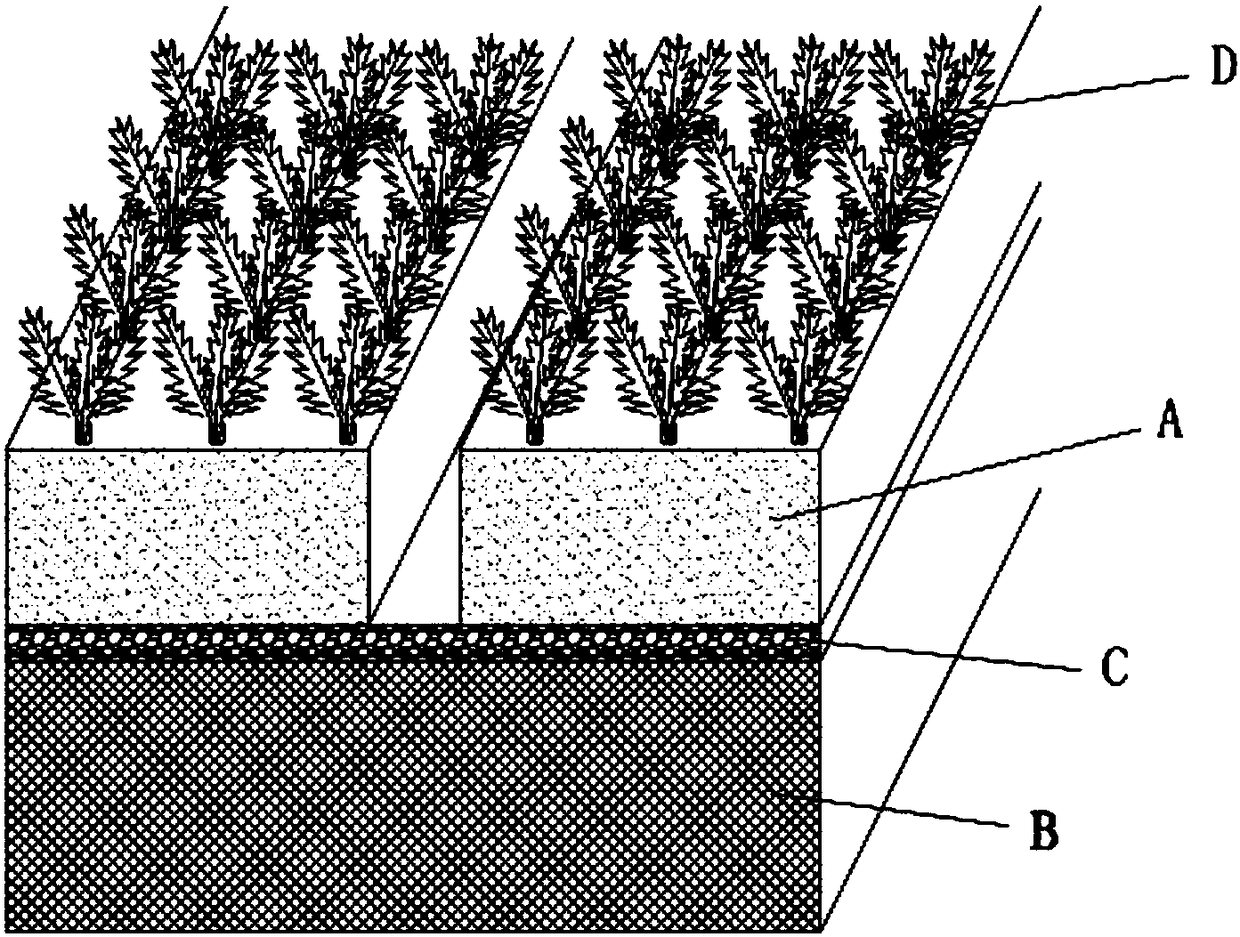Treatment method for heavy metal pollution of soil
A heavy metal and soil technology, applied in the field of soil pollution control, can solve the problems of easy residual heavy metals, prone to genetic variation of microorganisms, and limited depth of soil treatment, so as to achieve the effect of enhancing absorption efficiency and improving the speed of pollution repair
- Summary
- Abstract
- Description
- Claims
- Application Information
AI Technical Summary
Problems solved by technology
Method used
Image
Examples
Embodiment Construction
[0030] The present invention is further described in conjunction with the following examples.
[0031] See figure 1 , The soil that is about 20-30cm below the surface is called the cultivation layer A. On the polluted land, the cultivation layer A is divided into strips, the soil in the strips is excavated and removed, and the citric acid aqueous solution with a pH value of 5-6 is sprayed in the polluted soil excavated, and then the citric acid aqueous solution Mix well with contaminated soil. During the stirring process, the citric acid aqueous solution is used as a heavy metal activator to activate the non-dissociated heavy metals on the surface of soil particles to convert them into free heavy metals that are easy to be captured and absorbed.
[0032] Cover the excavated plow bottom layer B with a 2-3cm thick barrier mat C, move the excavated polluted soil to the barrier mat, and then plant heavy metal super-accumulative plants D and heavy metal super-accumulative plants ...
PUM
 Login to View More
Login to View More Abstract
Description
Claims
Application Information
 Login to View More
Login to View More - R&D
- Intellectual Property
- Life Sciences
- Materials
- Tech Scout
- Unparalleled Data Quality
- Higher Quality Content
- 60% Fewer Hallucinations
Browse by: Latest US Patents, China's latest patents, Technical Efficacy Thesaurus, Application Domain, Technology Topic, Popular Technical Reports.
© 2025 PatSnap. All rights reserved.Legal|Privacy policy|Modern Slavery Act Transparency Statement|Sitemap|About US| Contact US: help@patsnap.com

